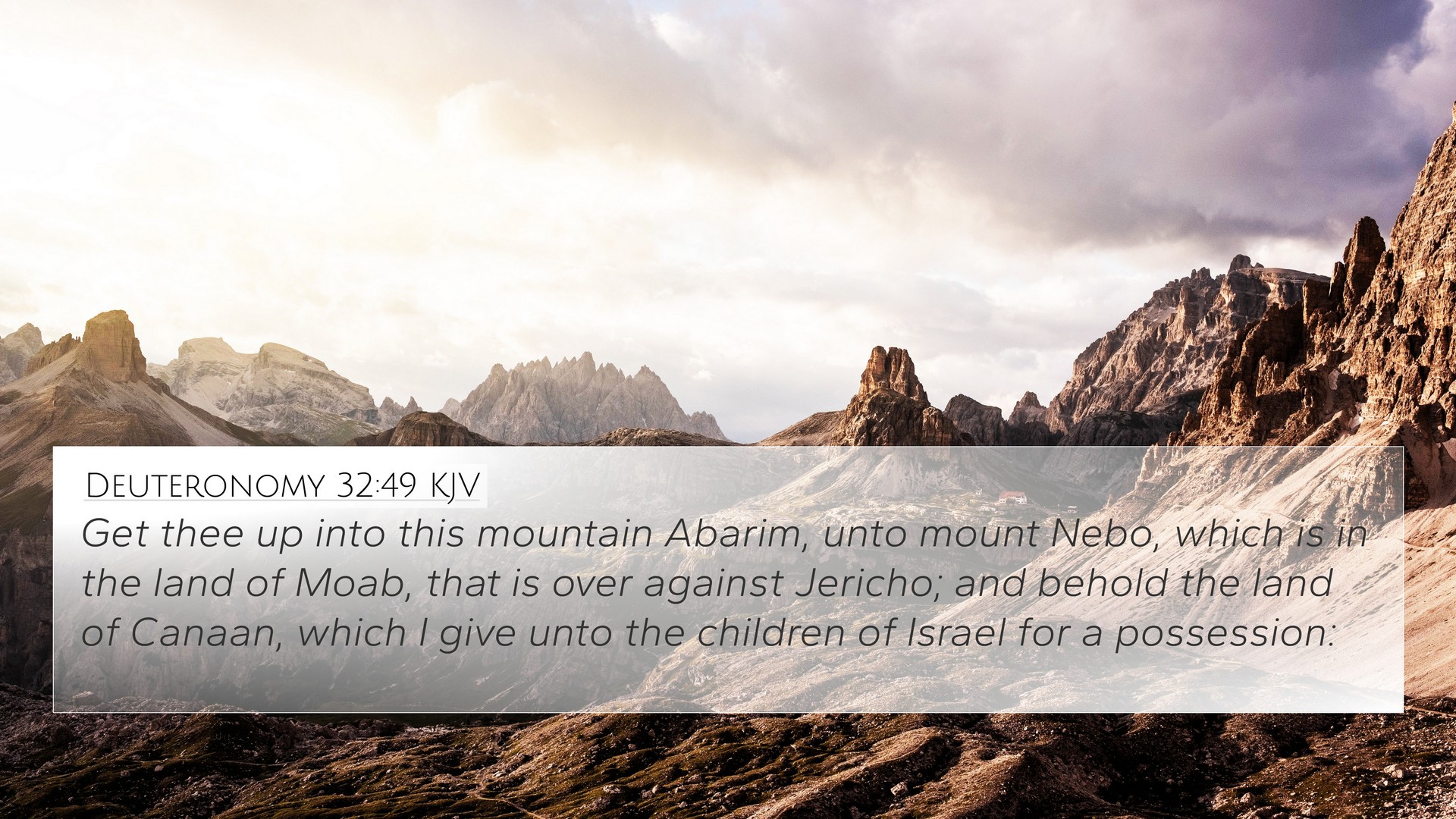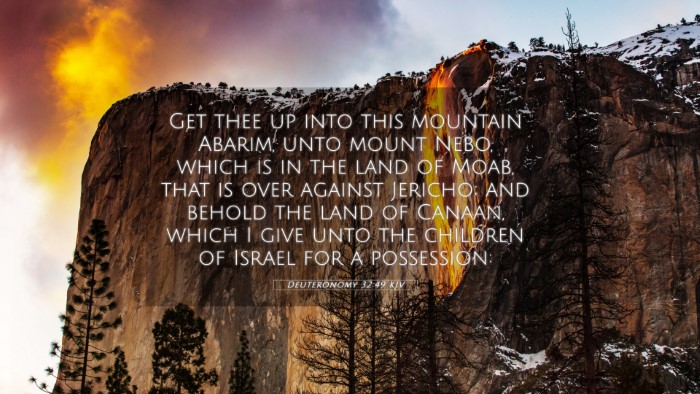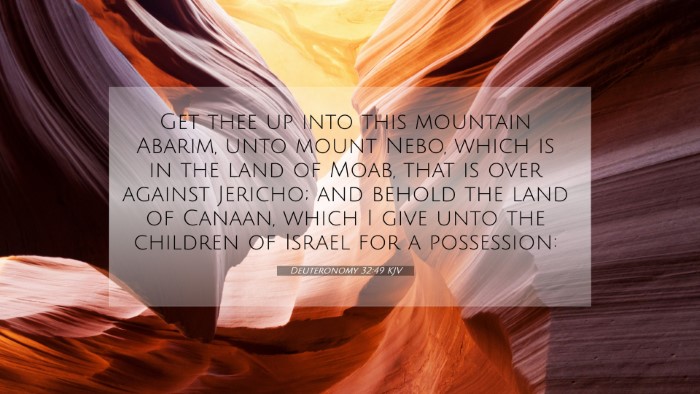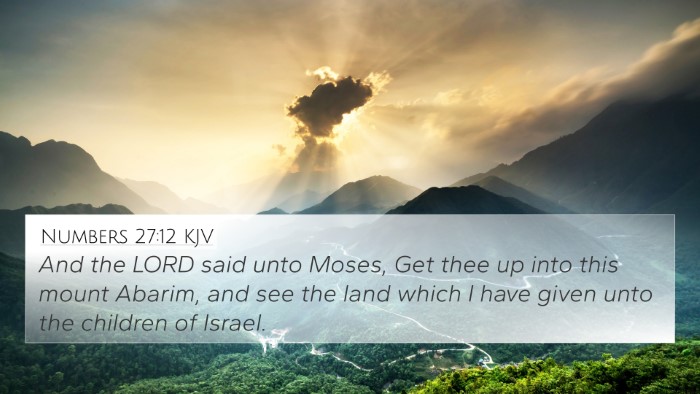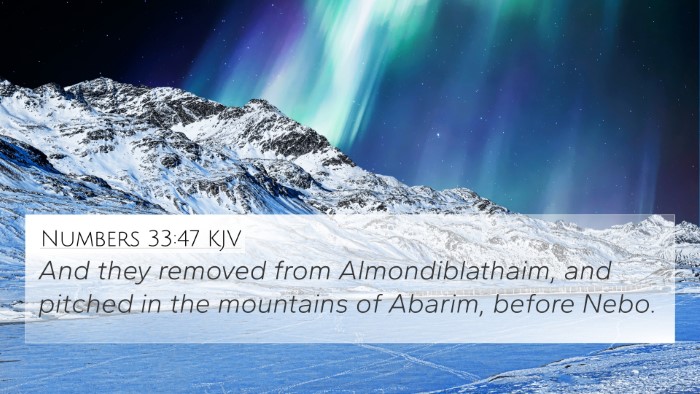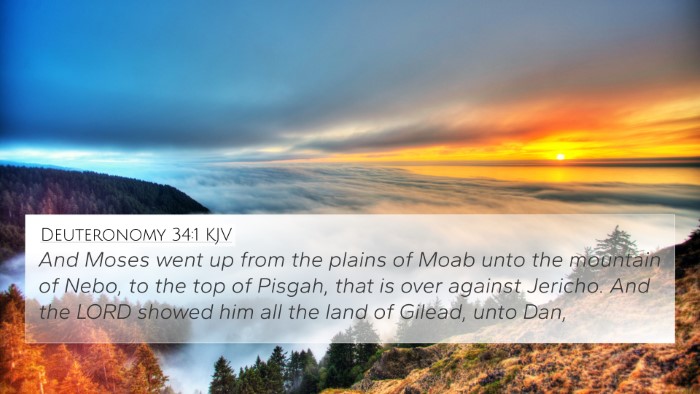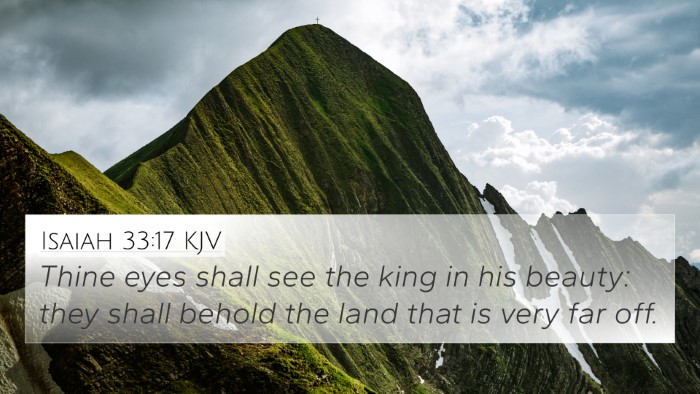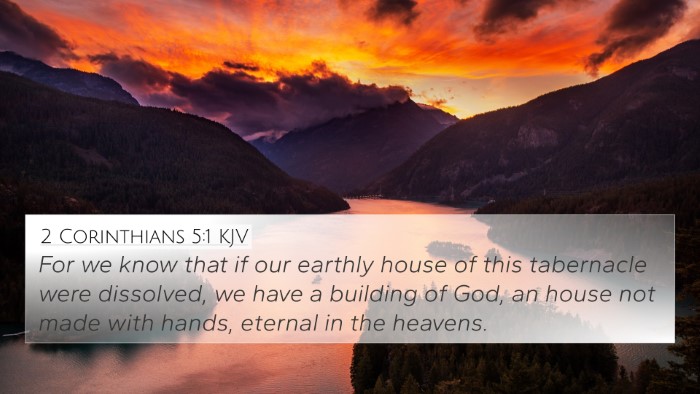Understanding Deuteronomy 32:49
Deuteronomy 32:49 presents a significant moment in Moses' farewell address to the children of Israel. This verse is crucial for its prophetic implications and its connection to Israel's journey into the Promised Land.
The verse states: "Get thee up into this mountain Abarim, unto mount Nebo, which is in the land of Moab, that is over against Jericho; and behold the land of Canaan, which I give unto the children of Israel for a possession."
Commentary Insights
- Matthew Henry: Henry emphasizes the obedience of Moses in following God's command despite the weight of the moment. Moses is ordained to view the Promised Land from a distance, reflecting the sin that barred him from entering.
- Albert Barnes: Barnes points out the significance of Mount Nebo as a vantage point. It represents a culmination of Moses' leadership and God's promise to Israel, illustrating themes of faithfulness and divine destiny.
- Adam Clarke: Clarke indicates the geographical and symbolic importance of the location. He elaborates on the broader context of Moses' life and the theological implications regarding God’s covenant with Israel.
Key Themes
The following themes emerge from Deuteronomy 32:49:
- Obedience to God's Will: Moses follows God's instruction, demonstrating steadfast faith even in the face of personal disappointment.
- Divine Promise: The promise of the land to Israel signifies God's faithfulness and the hope of fulfillment of His covenant.
- Transition of Leadership: This verse marks a pivotal moment as Moses prepares to hand over leadership to Joshua, representing God's continuing guidance.
Bible Verse Cross-References
Deuteronomy 32:49 is connected to several other scriptures, offering a deeper understanding of its meaning:
- Numbers 20:12: Illustrates the consequence of Moses' disobedience which prevents him from entering the Promised Land.
- Joshua 1:1-2: Joshua is commissioned to lead the Israelites into the land, marking a new chapter following Moses’ leadership.
- Deuteronomy 34:1-4: Describes the fulfillment of God’s promise to Moses as he views the land before his death.
- Hebrews 11:13-16: Highlights the faith of Moses in seeing the promises afar, reinforcing the idea of looking toward a heavenly homeland.
- Matthew 17:1-3: The transfiguration of Jesus where Moses appears, symbolizing his lasting significance in relation to God's plan.
- Romans 15:4: Encouragement that the Scriptures provide hope, as Moses' story serves as an example for all believers.
- Psalm 90:10: Reflects on the human experience of life and its brevity, which Moses embodies as he faces his impending death.
Comprehensive Analysis
This analysis not only explores the verse in focus but also its broader context in Scripture:
- Contextual Relevance: Understand how Deuteronomy fits within the Pentateuch and the overarching narrative of Israel's journey to the Promised Land.
- Thematic Patterns: Observe how themes of disobedience and redemption interact throughout both the Old and New Testaments.
- Inter-Biblical Dialogue: Study connections between Deuteronomy and the teachings of Jesus, especially pertaining to fulfillment of the Law.
- Cross-Referencing Techniques: Use various tools for Bible cross-referencing to deepen one's study and comprehension of this passage.
Applying the Word
Through cross-referencing and studying related Bible verses, believers can find encouragement and wisdom:
- How to use Bible cross-references: Employ a Bible concordance or cross-reference guide to find thematic connections that deepen understanding.
- Identifying connections between Old and New Testament: Explore how Moses' experience foreshadows Christ's fulfillment of the Law.
- Bible verses related to faithfulness: Draw insights from James 1:12 and Galatians 6:9 on enduring challenges while trusting in God’s promises.
Conclusion
Deuteronomy 32:49 is rich with meaning and provides robust opportunities for thematic Bible verse connections. By engaging with public domain commentaries and cross-referencing related scriptures, readers can gain a fuller understanding of God's promises and the nature of His covenant with His people.
Ultimately, this verse serves not only as a historical account but also as a timeless reminder of faith, obedience, and the unfailing character of God in guiding His people.
